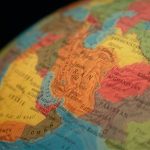The world may be witnessing Khamenei’s attempt to restore his image—though whether he, or someone else, is behind it remains unclear.
Iran’s Supreme Leader Ayatollah Ali Khamenei appeared in public on Monday, marking his first public appearance since the onset of Iran’s recent 12-day war against Israel. Iranian state television showed him greeting worshippers at Tehran’s Imam Khomeini Mosque last Saturday, the day before the Shia Muslim observance of Ashura.
Ashura is an important observance in the predominantly Shia Muslim nation, and the Supreme Leader traditionally leads the commemoration of the death of the Prophet Mohammed’s grandson, Hossein. Ashura occurs on the tenth day of Muharram, which is observed as a month of mourning.
Where Was Khamenei During the Israel-Iran War?
The 86-year-old Khamenei is widely believed to have ridden out the war in a bunker in Tehran—where he delivered four pre-recorded addresses, one of which came after the June 24 ceasefire.
Khamenei’s caution was apparently justified given Israel’s successful targeting of top Iranian commanders and nuclear scientists. Top Iranian government officials reportedly had no contact with him during that time. Israeli Prime Minister Benjamin Netanyahu refused to rule out targeting the elderly ayatollah, despite President Donald Trump’s warning not to do so.
Khamenei’s last address claimed victory over Israel and the United States, downplaying any damage to his nation’s nuclear facilities. President Trump publicly disputed Khamenei’s claims.
Speculations that Khamenei may no longer be in complete control continue to circulate. Harvard visiting scholar Dr. Lina Khatib went so far as to speculate that “Ali Khamenei is likely to become the Islamic Republic’s last ‘Supreme Leader’ in the full sense of the word.” The Iranian media, however, played up his presence at the mosque, including showing apparent joy among the Iranian people who met him.
The mosque itself may also be significant in Khamenei’s return. It was named after Ayatollah Ruhollah Khomeini, the political figurehead of the protest movement that toppled the Shah in 1979 and founded the Islamic Republic. Khamenei succeeded Khomeini upon the latter’s death in 1989. Whether Khamenei still holds the reins or not, association with his predecessor sends a message to the Iranian public regarding his legitimacy and the continuity of the state.
The Islamic Republic Has Never Been More Unpopular Inside Iran
However, reports indicate that the people may be increasingly disillusioned with the regime, and Khomeini’s image has been tarnished as of late as well. The Iranian media has encouraged people to share videos of their reaction to seeing Khamenei again in what is clearly an orchestrated public relations campaign aimed at easing tensions.
Moreover, despite Khamenei’s rhetoric, indications point to significant damage to Iran’s nuclear enrichment facilities and to the program as a whole. Iran has yet to allow United Nations International Atomic Energy Agency inspectors to inspect the sites, limiting the information available to the outside world; however, estimates have suggested that Israeli and American airstrikes on Iran’s nuclear sites likely set the country’s nuclear program back between six months and two years.
Large swaths of the population are also reportedly questioning the Islamic Republic’s heavy investment in nuclear enrichment programs to refine uranium far past the level needed for civilian power generation. There are even rumblings about Khamenei setting the nation on a collision course with Israel and the United States—furthering Iran’s pariah status and resulting in significant damage to the country and its people.
The world may be witnessing Khamenei’s attempt to restore his image—though whether he, or someone else, is behind it remains unclear. Even if elements of the Islamic Revolutionary Guard Corps (IRGC) are truly in charge of the country now, Khamenei is still useful as a figurehead. Saturday’s appearance was all about observing Ashura, with no political statements—though he was seen encouraging the mosque’s senior cleric to sing the patriotic song, Ey Iran, which was popular during the conflict. If this trend continues, it may be a sign that the “supreme leader” is the supreme leader no longer.
About the Author: William Lawson
William Lawson is a military historian focusing on World War II and 20th century conflicts and the American Civil War. His specialty is operational level warfare, especially American amphibious doctrine. He writes on history, politics, and firearms for multiple publications and historical journals. He serves on the editorial advisory board for the Saber & Scroll Journal and Military History Chronicles and is a member of the Society for Military History and the American Historical Association. Lawson is based in Virginia.
Image: Shutterstock / Photo Agency.

















